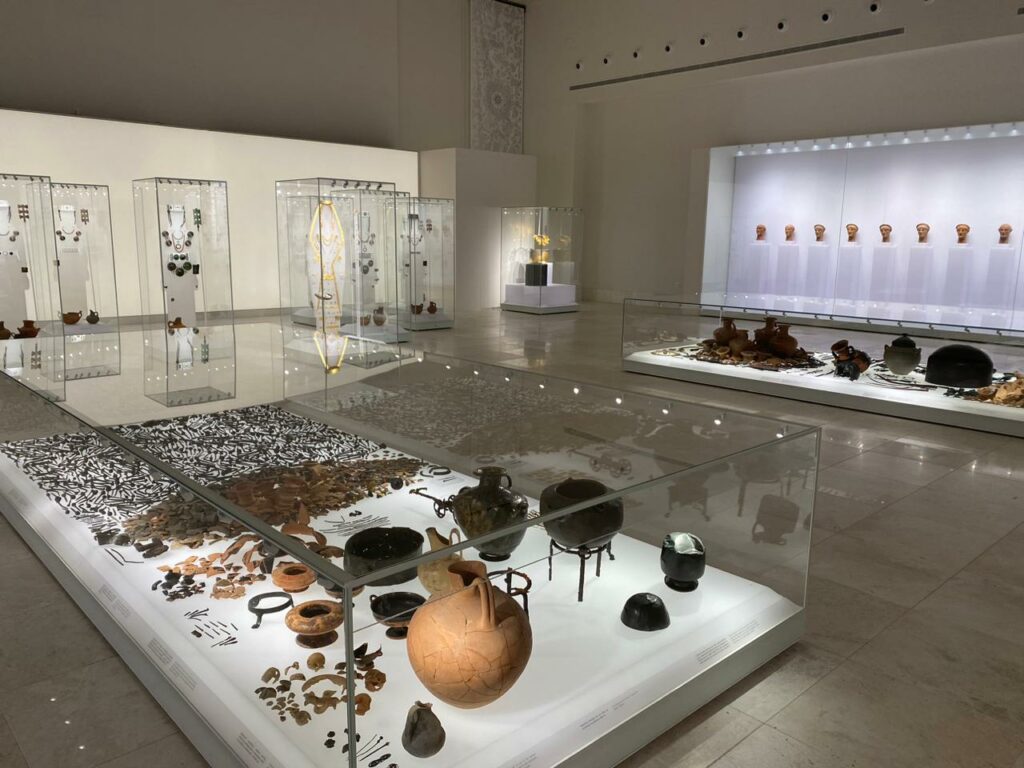Polycentric Museum of Aigai: Showcasing the Hellenistic Ecumene – Housing the most illustrious period of Ancient Macedonia.
What impresses in the new Museum of Aigai (Vergina) is the white. Dominant as a color both inside and outside the architectural complex. It seems to invite the visitor: Here is the light. Here are the treasures of the ancient Macedonians. Exposed in the white, bathed in the light scattered everywhere by the sun of Macedonia.
Deliberate and well-conceived, the creators of the Museum of Aigai had the idea and incorporated white, light, and the rays of the sun to play the game of history from the birth of Macedonia and the era of legends to where Alexander the Great took the Greek language.
Such a sunbeam that now illuminates the corner of the museum, focusing on the exhibits, shining in the eyes of a photographer seeking the best visual angle for the statue of Eurydice, the mother of Philip II, the grandmother of M. Alexander. “Collected” by young Perdiccas “picked up” from the earth and placed under his cloak a thousand years ago. It’s the same one who gifted Cleio, the muse of History, and sent the tireless Herodotus to write the first significant chapter and the most splendid narrative of the Macedonian kingdom: his own, of Amyntas, Alcetas, Aeropus, Archelaus, Arridaeus, Derdas, Eurydice, Phila, Olympias, Philip, and the Great Alexander.

The sixteen-rayed sun of Macedonia.
Herodotus… He is the one who taught us that the three sons of Temenus—Gauanes, Aeropus, and Perdiccas—were exiled from Argos and first sought refuge in Illyria, and then in the city of Lebaea in Upper Macedonia, where they earned a living by tending to the animals of a Paionian ruler. When something interpreted as a divine warning appeared, the disturbed king ordered them to leave his land. They asked for their earned wages, and he, “blinded by the gods,” showed them the sun’s rays entering through the chimney of his house, saying, “Here is the wage you deserve.” The two elder brothers were astonished, but the youngest, Perdiccas, who had a dagger, drew it and said, “King, we accept whatever you give us,” then cut and “collected” the sunbeams from the soil, placing them in his cloak.
After the three brothers left, the king pursued them, considering that young Perdiccas had insulted him. He believed that with his movements and dagger, Perdiccas had asserted claims to the throne and his dominion under the sun. They sought refuge beyond the “gardens of Midas,” and using Mount Bermio as a stronghold, first seized neighboring areas and then all of Macedonia. The myth has it that one day, Perdiccas followed a flock of goats, and at the spot where the goats stopped (aiges in Greek), he decided to build his capital, which was aptly named Aigai.
The royal dynasty of Macedonia was known as the Temenids or Argeads because Gauanes, Aeropus, and Perdiccas were sons of Temenus from Argos (southern Greece). The emblem of their royal house was not particularly known until Manolis Andronikos discovered (1977) the tomb of Philip II. It was then realized that the sixteen-rayed “Sun of Vergina” is the symbol directly linked to the writings of Herodotus and the collection of sunbeams by Perdiccas, the founder of the dynasty.
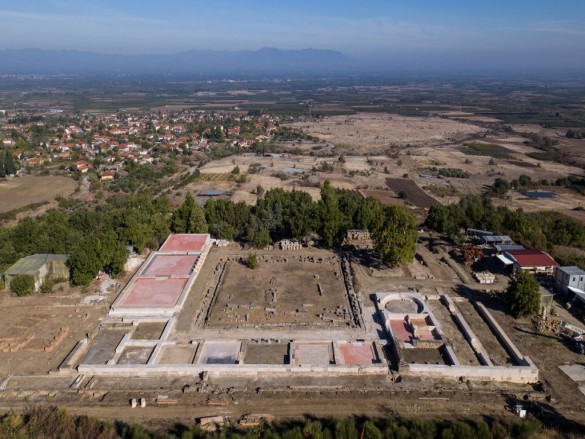
The sunbeam of Perdiccas
The sunbeam that King Perdiccas brought to Aigai, he preserves it today inside, and the new Polycentric Museum, which opened its doors a few months ago to present the great journey of Macedonia and the Macedonians, their kings and warriors, their wealth, gold, power, and culture, their material and immaterial heritage through Time, to the entire World.
And what becomes evident to everyone from the very first moment is that the Polycentric Museum of Aigai radiates. Just like the face of the Ephor of Antiquities of Imathia, Angeliki Kottaridi, and all those who speak about its construction and creation, about what has been done and what is planned to be done, and especially about the eternal message emitted by the archaeological site of Aigai and the Macedonian Royal Tombs of Vergina.
It may not have been said by many yet, but the Museum of Aigai contends for the title of one of the most comprehensive archaeological museums in Europe. The entire complex is unique, constituting the largest Archaeological Park in Macedonia with exhibits from the most illustrious period, directly linked to King Philip II and the World-Conqueror King Alexander III.

From Aigai to the Ecumene
Experts, however, agree that it represents a new, holistic, and dynamic approach to the relationship between an archaeological site, a museum, and visitors. It incorporates and connects the new central building with the entire archaeological site of Aigai (Vergina). The main museum building was designed in such a way as to become the conceptual gateway to the archaeological site and the history of Aigai, to the history and culture of the Macedonians, as well as to the Hellenistic Ecumene. Inside, it hosts the physical headquarters of a digital museum titled “Alexander the Great, from Aigai to the Ecumene.”
However, perhaps the most significant aspect is that this museum is not static (rows of exhibits per room-exhibition) but a modern, polymorphic, and evolving entity.
Many recommend to visitors arriving at the site to first explore the underground Museum of the Royal Tombs with carefully illuminated objects inside the tombs and then emerge into the light and whiteness of the Polycentric Museum to explore its exhibits and subsequently the rest of the archaeological park. This way, they can feel more strongly the sensation of “from darkness to light.”
The entire complex constitutes a grand creation with variations and emotions, different from anything we have seen at other archaeological sites. It organically sprawls across the archaeological site and encompasses more than one section.
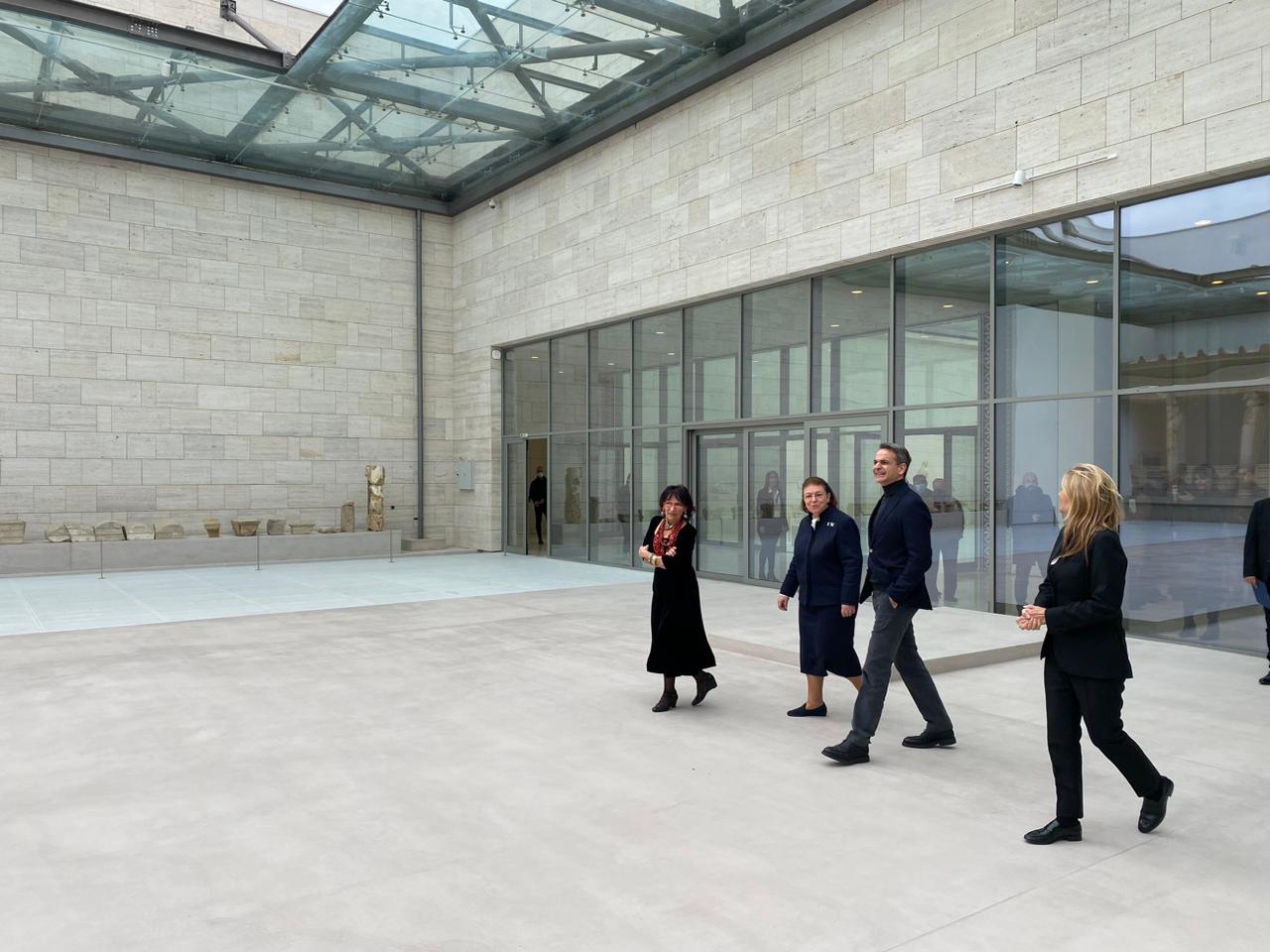
The Parthenon of Macedonia
The well-known Museum of the Royal Tombs with the tomb of Philip II and the protective shell is one unit. The Archaeological Park of the necropolis, the Palace, and the theater are two more. Especially for the Palace of Aigai, the archetype of all public buildings in the Hellenistic Oecumene, the largest restoration project of several million euros “ran.” And this space, which experts have long referred to as the “Parthenon of Macedonia,” is officially handed over to the public (until the end of December 2023) with the notation of its special significance: It is the place where Alexander was proclaimed king of the Macedonians in 336 BC, marking the beginning of his journey that changed the world.
Archaeologists say that the new Museum serves as a gateway to Aigai. It is the entrance to the history of Macedonia and, at the same time, the gateway to the Hellenistic Oecumene, as it hosts the earthly, natural seat of the digital museum “Alexander the Great, from Aigai to the Oecumene.”
To explore this complex according to one’s preferences and engage in a conversation with the history presented by its small and large exhibits, one might need perhaps three days!
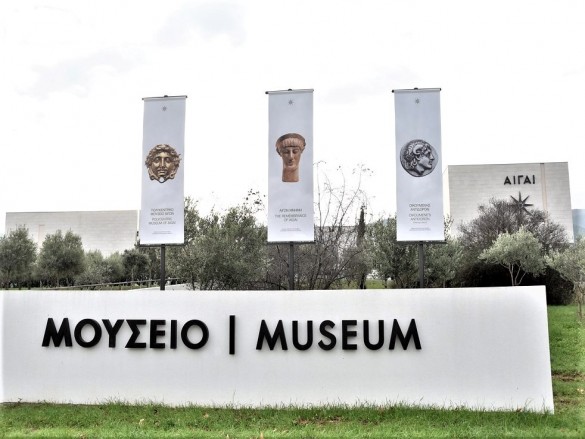
Alexander the Great welcomes you…
Alexander the Great himself welcomes visitors to the largest museum in Macedonia. Across from the entrance, the sculpted head of Alexander (2nd century BCE) is displayed. On two large screens to the left and right, the Macedonian King opens the two large windows to the World.
One thousand hours of video that never stop as long as the Museum operates, present all the places of the then-known world that the great strategist reached and conquered, territories that today belong to 26 countries. The digital Alexander is expected to be completed by 2023. As Angeliki Kottaridou, the head of the Ephorate of Antiquities of Imathia, stated to the Athens-Macedonian News Agency (AMNA), the museum already has a thousand hours of video from Egypt, Northern Syria, Jordan, Asia Minor, and Greece, and expects to supplement material from certain regions in the East, such as Afghanistan. This specific material will be accessible through the internet.

The veiled Eurydice, the grandmother of the Cosmocrator
Another figure that seems ready to narrate the legends of the “Iskander” of the peoples of Asia is his grandmother: Queen Eurydice. Mother of Philip II (in 1987, her tomb and throne were discovered with a painting depicting the “Abduction of Persephone by Pluto”), she dominates the Sculpture Hall (significant findings with many royal offerings). As she gathers her veil in the wind, she recounts—through archaeologist Angeliki Kottaridi—that this particular queen changed the fashion of her time, and sculptors changed the way they depicted a queen (YouTube ET-3 24/12/21).
“The scarf falling behind her head (statue from the 4th century BCE) is identical to the bridal veil worn by women today. This is extremely interesting for archaeologists and historians, what is derived from the sculpture of the veiled Eurydice: The mother of two kings and grandmother of a Cosmocrat presents a style, ‘a form – an image – a type that ‘leaves’ from here (from the Aegae) and goes to the entire Hellenistic oikoumene,’ says Ms. Kottaridi. ‘All queens are depicted like this, even up to Cleopatra! And then it extends to Roman empresses, priestesses, and beyond, reaching (as a form of representation) the Virgin Mary…'”
“Starting the journey in the new museum, the visitor encounters the large atrium, where the upper part of the Palace is displayed, while the part that cannot be restored remains in situ. It is the largest building of classical antiquity, and according to archaeologist Eleni Minasidou, ‘There is no parallel to it. The Stoa of Attalos in Athens is two-storied, but it is later. Here, we know for sure that it was completed by 336 BCE when Philip was assassinated,’ she points out.”

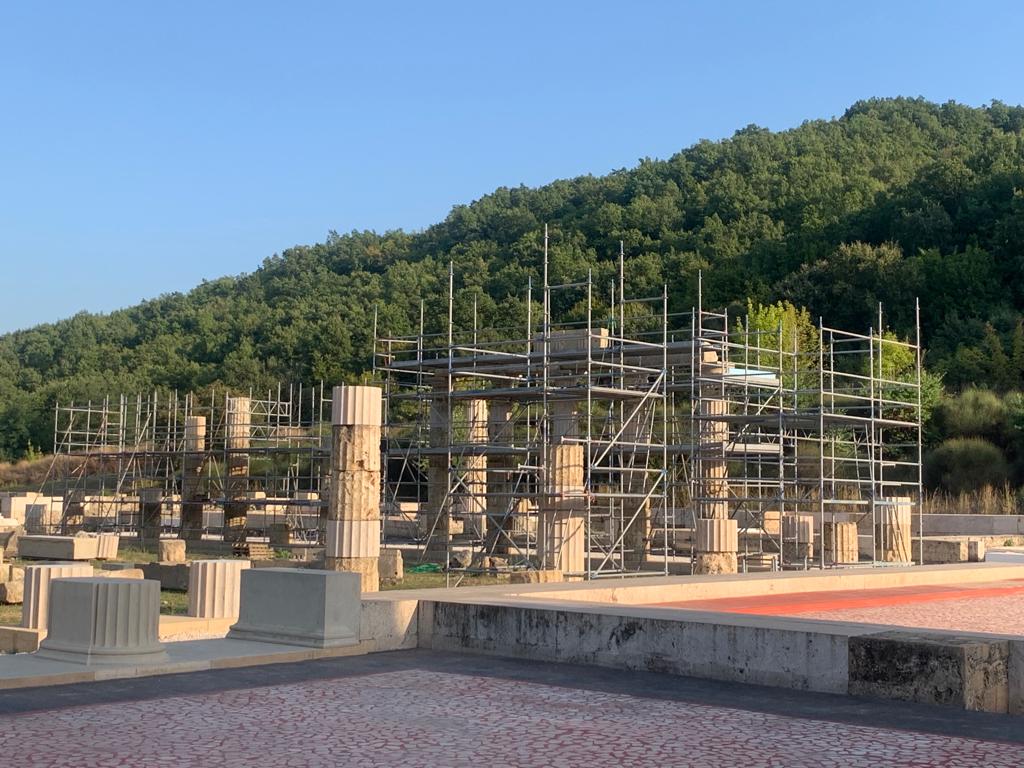
“The Palace of Philip II”
“The Palace is the grand construction undertaken by Philip in Aegae. It stands as a testament to grandeur and is a rare architectural structure directly emanating from the civilization of ancient Macedonia, representing the most significant period of Macedonian kingship’s power and influence. It is an exceptional building complex spanning 15,000 square meters, modest and functional, yet not lacking in luxury. The materials used, such as marble and painted ceramics, were of the highest quality of the time, as affirmed by archaeologists involved in the excavations. It attests that it wasn’t just the residence of the royal family; it was a palace open to the people, serving as the focal point for all economic, judicial, and social activities of the era.”
“Today, visitors can observe the facade of the palace reconstructed in the atrium of the Central Museum of Aigai. Outside the museum, restoration and reconstruction work is underway on the architectural complex of the Palace located on the 15-acre site. This includes the restoration of the grand colonnade, the propylon, and the stoas on the facade, as well as the elevation of the walls and the preservation of the mosaics in the halls where the banquets of the Macedonian kings took place.”
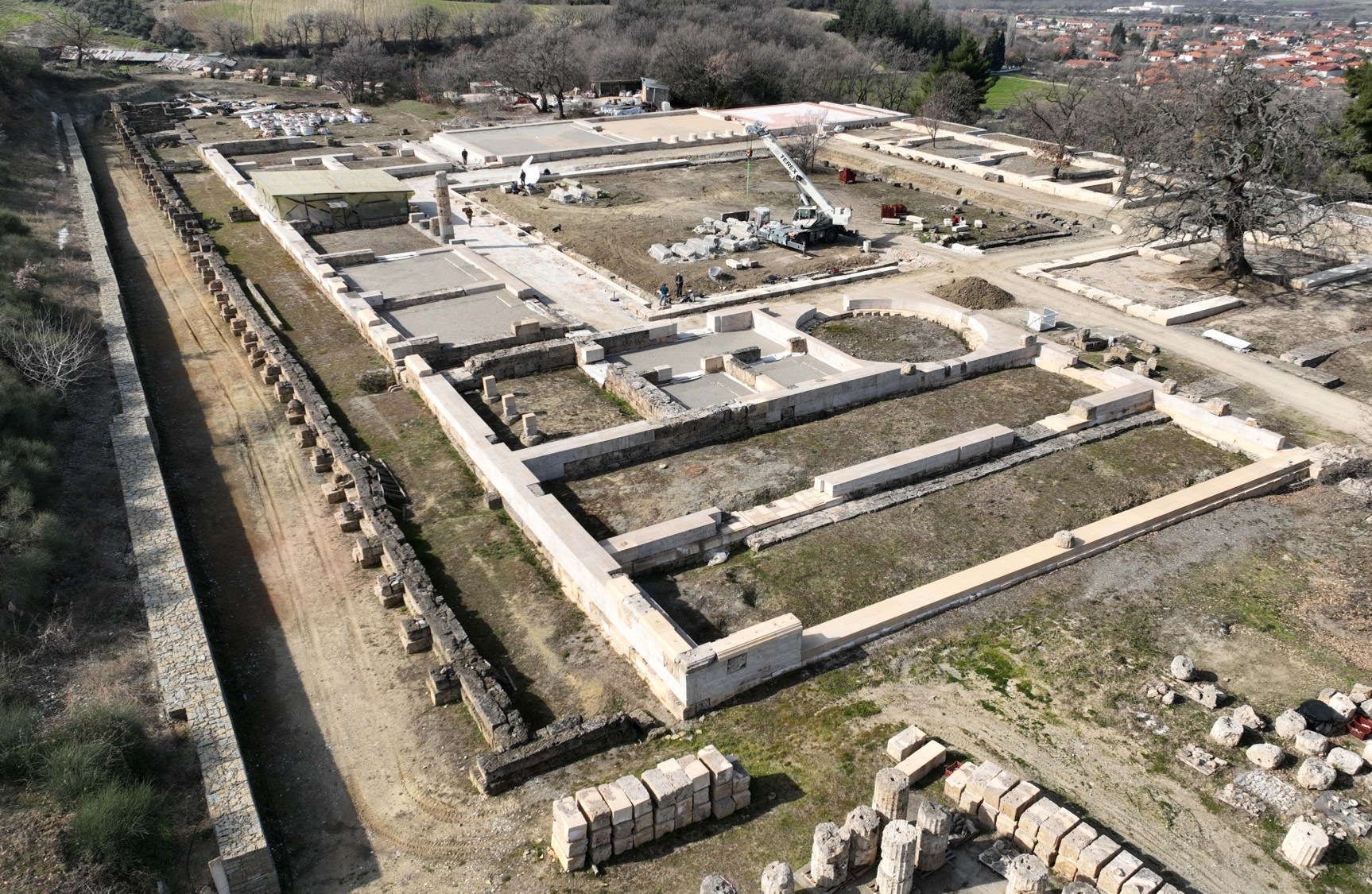
Sarissa, the Macedonian warriors’ weapon of choice
The armament of the ancient Macedonians, arranged chronologically, begins with long swords, spears, and javelins. During the period when cavalry appears, these swords become shorter. Knives, spearheads, and javelins, helmets, shields, and the ‘ultimate weapon’ of the time, the famous sarissa, measuring 6 meters in length, fragments of which hold a prominent position but are unable to reveal their endurance secret.
The visitor can enter a Macedonian house. The gaze of a man will immediately spot the vessels from the famous symposia of the ancient Greeks. In the women’s chamber, a female visitor will surely see the jewelry, mirrors, and all the beauty accessories, as well as the adorned figure of the ‘Lady of the Aigai,’ the other noblewomen, culminating with the golden wreath found in the sanctuary of Eukleia.
The main building of the museum, in addition to the introductory exhibit ‘Window into the World of Alexander the Great,’ currently hosts five exhibitions.
- The exhibition of architectural elements with the central exhibit being the reconstructed section of the Palace: In the large atrium of the museum, in a protected space, a section of the upper floor of the central part of the facade of the palace of Aigai has been reconstructed, measuring 30 meters in length. It is a unique reassembly and restoration of an ancient monument, the most characteristic part of the ancient Palace of Aigai, a pioneering architectural achievement for its time that served as a model for countless buildings in the East and West for centuries. Although destroyed by the Romans in 148 B.C., meticulous restoration work has brought it back to its original glory, and its space is now open to visitors.
- The sculpture exhibition, which includes findings from the extensive excavations in the broader archaeological site of Aigai
- The central exhibition ‘Aigai Memory,’ showcasing findings from the excavations of Aigai: Presented are artifacts that reveal the identity of the city, traces of religious ceremonies, and the establishment of the Palace.
- The art exhibition ‘Material Memory’ featuring works by the painter Christos Bokoros, created specifically for presentation at the Museum of Aigai
People from the ends of the Earth.
- Currently, for the next two years, the special exhibition ‘Oecumenical Antidoron’ is hosted (in collaboration with the Numismatic Museum and collector Theodoros Aravanis), featuring all the figures who played a role in the entire Hellenistic Oecumene. The exhibition ‘Oecumenical Antidoron’ seeks to approach the phenomenon of the Hellenistic Oecumene, the expansion of Greek culture to the Far East, through the representations of the key figures of the developments, as depicted on coins, the official symbols of their power and authority.Currently, for the next two years, the special exhibition ‘Oecumenical Antidoron’ is hosted (in collaboration with the Numismatic Museum and collector Theodoros Aravanis), featuring all the figures who played a role in the entire Hellenistic Oecumene. The exhibition ‘Oecumenical Antidoron’ seeks to approach the phenomenon of the Hellenistic Oecumene, the expansion of Greek culture to the Far East, through the representations of the key figures of the developments, as depicted on coins, the official symbols of their power and authority.
They are ‘Faces’ that arrived in Aigai to pay tribute to where everything began. Those are the Ptolemies from Egypt, the Attalids from Pergamon, the Seleucids from Western Asia. They are the kings of the Greco-Bactrian and Greco-Indian kingdoms. They are the Parthians, they are the Arabs; they are all those who still want to be called Macedonians, 300 or 400 or even 500 years after Alexander the Great, and ‘speak’ Greek on their coins. The exhibition presents a total of 1790 ancient coins featuring the portraits of leaders from the 5th century BCE to the era of Constantine Palaiologos!
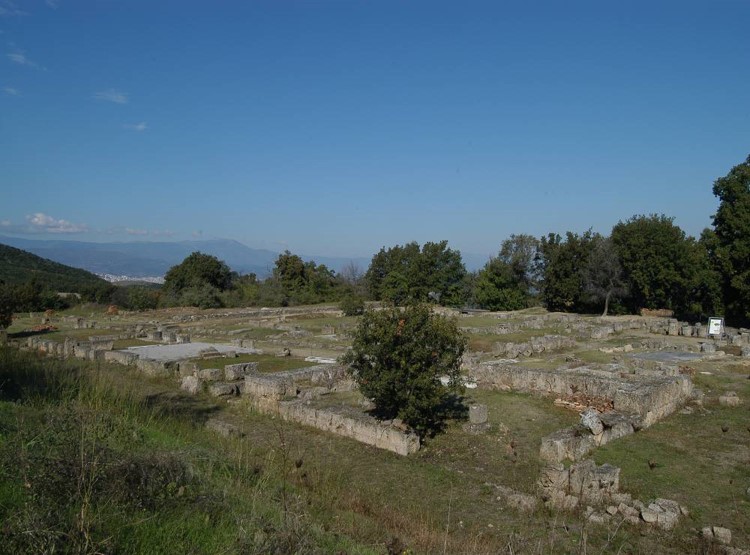
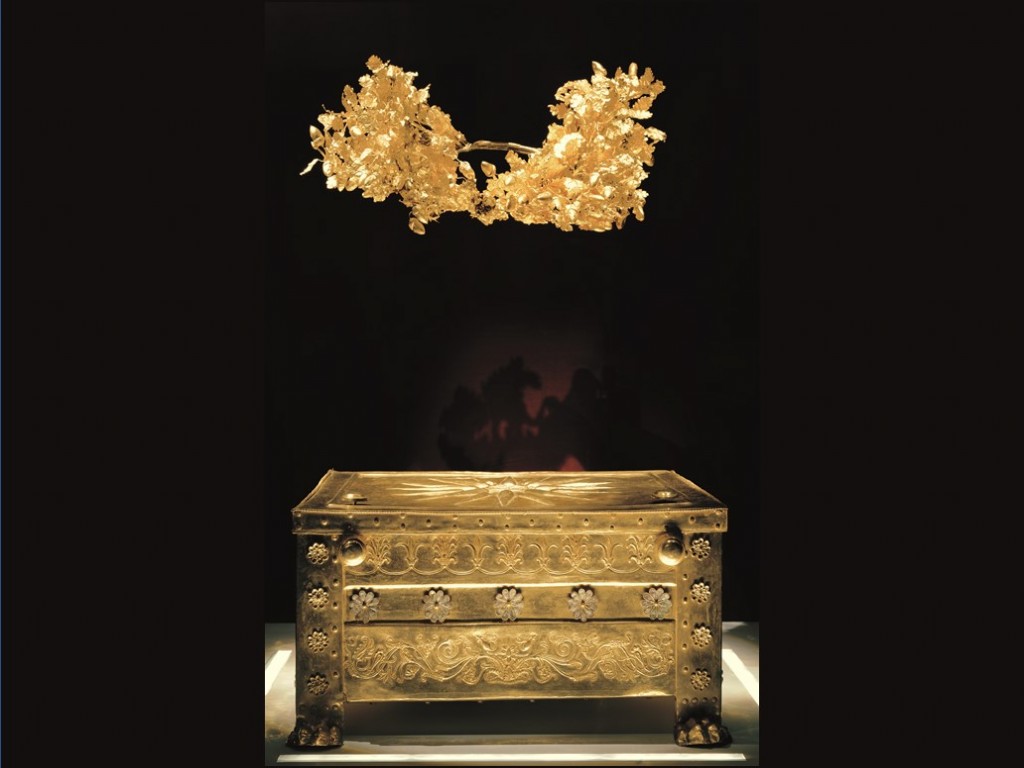
EDITOR: Thanasis Tsinganas
VERSION IN ENGLISH: Lina Tsingana.
